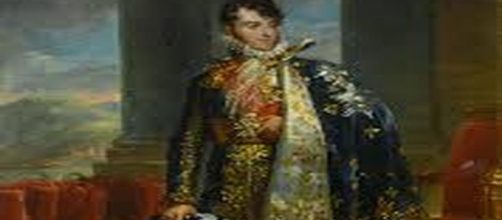In February 2017, Artnet News reported that the Italian government licensed the export of a full-length portrait of Napoleon's brother-in-law Prince Camillo Borghese to London gallery Robilnt+Voena for sale to the Frick museum in New York. For two centuries the work, painted by early 19th century French artist Francois Gerard, was in the collection of Borghese descendants. Now, more than a year after issuing the license, the export office is revoking it.
Communication failure
Maria Clarelli of the culture ministry in Rome told the Art Newspaper that her government wants the picture back because the Prince is “an emblematic figure of the Italian aristocracy, and therefore a part of her country's cultural heritage.
By that logic, the city of Florence should claim the Mona Lisa held by the Louvre as its cultural heritage. But Clarelli had another reason for wanting the picture back. She told the Art Newspaper that the gallery's application for the license didn't mention the image was of a Borghese prince, only that it was “a male portrait.” Arguing against her point, Christopher Martinello, who heads the Art Recovery International - a firm that specializes in mediating restitution claims - said in the same news story that the prince's identity is clearly marked on the back of the picture. “All you have to do is turn it around and you have the name of the sitter. We believe that the dealer is acting completely in good faith and we hope to persuade the authorities to withdraw their claim.”
Art of the deal
“Good faith” may be an embellishment.
Given that the gallery knew the artwork portrayed Italian royalty, calling it “male portrait” comes across as sly. On the other hand, since Clarelli deems the Borghese prince a source of national pride, one may wonder why she didn't recognize his coat of arms? And while all these argument center on the celebrity of the subject, it's notable that only the Frick museum commented on the quality of the painting itself. Chief curator Xavier Salomon told Art+Auction that it wasn't hard to decide to buy the painting even though it was “very expensive.” He didn't disclose the price, but instead said, “I recognized immediately the quality of this portrait and how great it was, and so, I decided to move very decisively, without leaving the dealer much time to offer it to other people.”
Business as usual
The art world gets into headlines regularly for holding work in contention.
Probably the most famous case is that of the British Museum refused to return its cache of marbles lifted from the Parthenon in 1801 when the 7th Earl of Elgin, Thomas Bruce, made off with 253 of the temple sculptures to sell to the museum. Despite pleas from the Greek government, the Brits still won't give them back. But wait, here's a story that promises a happier ending. While the Washington Free Beacon reported in 2016 that American museums were holding fast to art of Jewish collectors stolen by the Nazis and courts were slow to act, Ronald Lauder, leader of the World Jewish Restitution Organization, got a unanimous vote from Congress for legislation called the Holocaust Expropriated Art Recovery Act, which entitles Holocaust survivors to expedited court hearings for their claims..


